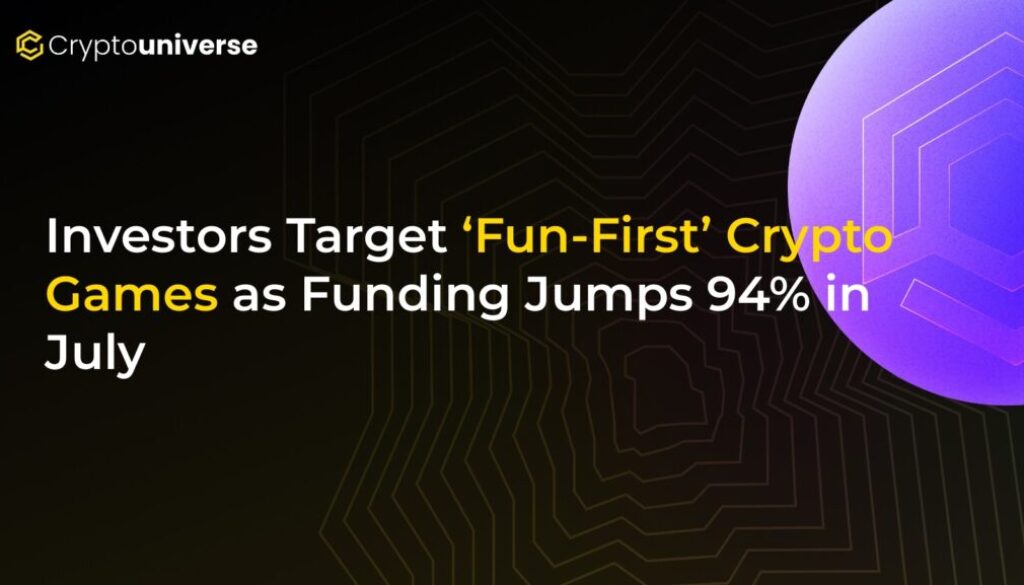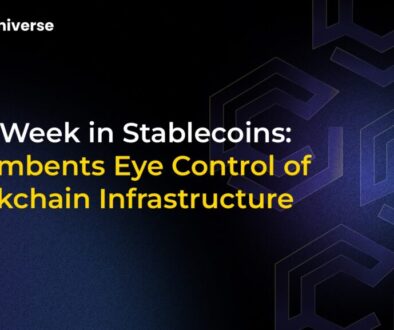Investors Target ‘Fun-First’ Crypto Games as Funding Jumps 94% in July

Web3 Gaming Roars Back as Investment and Player Activity Surge
After a three-month cool-down, the Web3 gaming sector is heating up again. In July, venture capital investment in blockchain gaming projects surged to $60 million, marking a significant rebound and signaling a renewed confidence in the market. This financial boost was mirrored by a steady growth in player engagement, with daily unique active wallets (dUAW) climbing 2% to nearly 4.9 million.
This resurgence, however, isn’t just about the numbers. It represents a critical evolution in the industry. Investors are no longer just chasing hype; they are backing a new philosophy where engaging gameplay comes first. The era of prioritizing tokenomics over fun is fading, making way for a more mature and sustainable ecosystem.
The New Investment Thesis: Gameplay Over Gimmicks
The recent flow of capital reveals a clear shift in investor strategy. While March saw a higher funding peak at $69 million, the lull in the following months forced a market-wide re-evaluation. The projects attracting funding today are not the speculative “Axie killers” of the past—games that promised to be the next big thing but often failed to deliver a compelling experience.
Instead, investors are focusing on projects with solid foundations and long-term vision. The new criteria for investment include:
- Proven Teams: Studios with experienced developers and a track record of shipping successful games are highly favored.
- Strong Intellectual Property (IP): Games built around established or promising new IPs have a clear advantage in attracting and retaining players.
- Robust Infrastructure: Capital is also flowing into the underlying technology that supports the ecosystem, such as user-friendly wallets, AI development tools, and cross-chain solutions.
This strategic pivot means that the most successful upcoming titles will treat blockchain as an enhancement, not the main event. Features like digital ownership and player-driven economies will be seamlessly integrated into high-quality games, rather than being the sole reason to play.
A Maturing Market: Quality Rises to the Top
This focus on quality is creating a more competitive landscape. While well-positioned projects with strong fundamentals are thriving, smaller studios and games with unsustainable economic models are finding it difficult to survive. Many are being forced to close down or pivot their strategies entirely.
This consolidation is a sign of a maturing industry. The projects that endure are laying a robust foundation for the next wave of growth, proving that Web3 gaming is one of the most resilient and forward-thinking sectors in the entire blockchain space.
Player Engagement Proves Resilient
While funding provides the fuel, player activity is the engine that drives the Web3 gaming world. In July, blockchain gaming was the only decentralized application (DApp) category to record an increase in user activity. With nearly five million daily active players, the sector continues to lead the DApp ecosystem.
This sustained interest is largely thanks to top-tier games keeping their communities engaged through major updates, new content, and refined gameplay. It proves that when the experience is compelling, players will stick around, regardless of broader market conditions.
What’s Next for Web3 Gaming?
The trends from July offer a glimpse into the future of crypto gaming. We can expect to see:
- Fewer, But Stronger Releases: The focus will shift from quantity to quality, with more polished and feature-complete games hitting the market.
- Cross-Platform Expansion: To attract mainstream audiences, more Web3 games will launch on PC, console, and mobile, breaking out of the crypto-native bubble.
- Brand-Driven Titles: Expect more collaborations with major brands to leverage existing fan bases and simplify the onboarding process for new players.
Ultimately, July’s numbers confirm that Web3 gaming is building serious momentum. By prioritizing fun and building sustainable ecosystems, the industry is not just surviving—it’s evolving into a formidable force ready for mainstream adoption.


